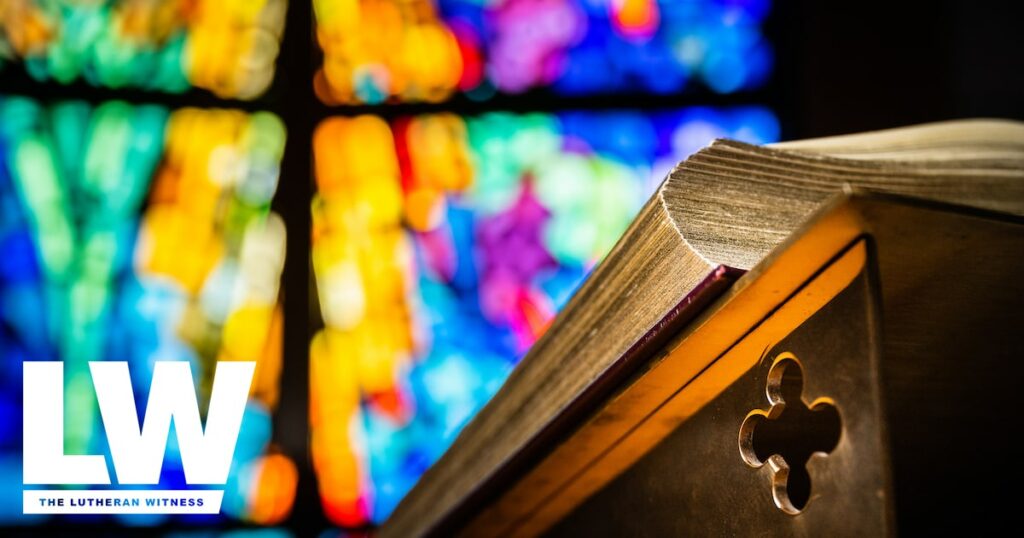by Matthew C. Harrison
“I appeal to Caesar!” (Acts 25:11). Because of those words, St. Paul, a Roman citizen, found himself aboard a large Egyptian freighter carrying 276 people as it drifted without sail and tackle across the Mediterranean Sea for 14 days from Crete to the small island of Malta (Acts 27).
That’s where I recently picked up the story, traveling with the Rev. Dr. James Voelz of our wonderful Concordia Seminary and 25 travelers, tracing the journey St. Paul made to Rome around A.D. 57 and the place there where he would eventually face martyrdom. We experienced a number of moving moments as we traveled the route of Paul’s journey, seeing the very places where he was held captive, proclaimed Christ, was under house arrest, martyred and where his earthly remains, by all accounts, lay buried. But one repeated experience kept hamming something home to us.
Along the route, we visited ancient Greek temples. After three months on Malta, Luke relates that Paul and company set sail for Syracuse in Sicily. Today, a Catholic church stands just a hundred yards from the ancient port on top of a gently sloping hill. But that church was built as a pagan temple five centuries before Christ. The ancient form and pillars are unmistakable. It is more than likely that Paul and the Roman centurion Julius, to whom he was tethered by chain (Acts 27:1ff), walked up that hill and viewed the temple and the city plaza.
We also visited the “Valley of the Temples” in Agrigento, where several of these massive structures still stand. They were built by thousands and thousands of slaves to worship the Greek and Roman gods and goddesses. In fact, half the population in the ancient Greco-Roman culture were slaves. Additionally, a huge number of priests and priestesses kept these large worship complexes in operation. One temple in Agrigento, now strewn across hundreds of yards of rubble, was some 270 feet long by 150 feet wide and 130 feet tall!
A visit to Herculaneum, which had been covered by the eruption of Mount Vesuvius in A.D. 79 and lay unknown under the volcanic mud and lava until the eighteenth century, was absolutely stunning. Then there was the “Forum of Appius,” the “Three Taverns” (Acts 28:15) and finally . . . Rome. The coliseum alone was testament to the ultimate power of the Roman Empire. For five centuries, of “games” occurred, up to 170 days a year, where two teams of twenty-four gladiators fought until one remained. Do the math on the bloodshed. Horrid.
In the face of all this and much more—including sexual deviance and decadence, abortion and infanticide—stood one man with a message. “But whatever gain I had, I counted as loss for the sake of Christ. Indeed, I count everything as loss because of the surpassing worth of knowing Christ Jesus my Lord” (Phil. 3:7ff).
We stood in the church built over the home that Paul had rented with the help of the Philippians while he awaited trial in Rome. Luke ends Acts with these words: “He lived there two whole years at his own expense, and welcomed all who came to him, proclaiming the kingdom of God and teaching about the Lord Jesus Christ with all boldness and without hindrance” (Acts 28:30–31).
Paul wrote Philippians from that spot, and the foundations of that house are thirty feet below the church that stands there day. This little, and by his own account, unimpressive man proclaimed a message that rocked and conquered the most powerful kingdom on earth. And it happened one person at a time, sharing the message of Jesus one at a time—one Baptism at a time, one sermon at a time.
The verse that lit the Roman world and sparked the Lutheran Reformation is true still today: “The Gospel . . . is the power of God for salvation” (Rom. 1:16). Because it is a power hidden in weakness, because it is passed and believed one person at a time, because it is most often rejected, the life of sharing Christ is most often a very lonely path. But don’t mistake for weakness this lowly and seemingly absurd message of Christ who died for our sins and was raised for our justification. With that message of Christ, the Church marches toward eternity and shall conquer hearts until the end of this world and all its kingdoms and their power, to the glory of God the Father.




Ed, are you thinking of Maxentius, Constantine’s brother-in-law and co-emperor at the time of a decisive battle for power,when Constantine fought behind the symbol of the cross?
In a recent blog I wrote, “An Open Letter To The Persecuted Christians,” I reflected on how the persecuted church eventually became the official religion of its persecutor’s, Rome. What an amazing God we have! I enjoyed this piece. I hope to have the chance to visit some of the sites of our church’s founding fathers someday.
So encouraging. ….one person at a time! Thanks and Blessings
An eloquent and meaningful message as usual, but the Roman leader Constantine, who in the name of God so mightily facilitated the transition of Christianity to the dominant religion of the Empire, might be more than a little perturbed to know that a message by a 21at century pastor” to Rome with Love” failed to even mention his name or offer a prayer of thanks for his contributions, along with Paul, as a notable patron of the Christian faith. Without Roman Emperor Constantine, President Harrison might well be employed today in an entirely different profession!
True! Let us not sacrifice the messenger.
Check your history. There were two equal leaders of Rome at the time Constantine and his equal made the Christian religion a legal religion. Constantine eventually won the leadership to himself. Can you find the name of the other leader?